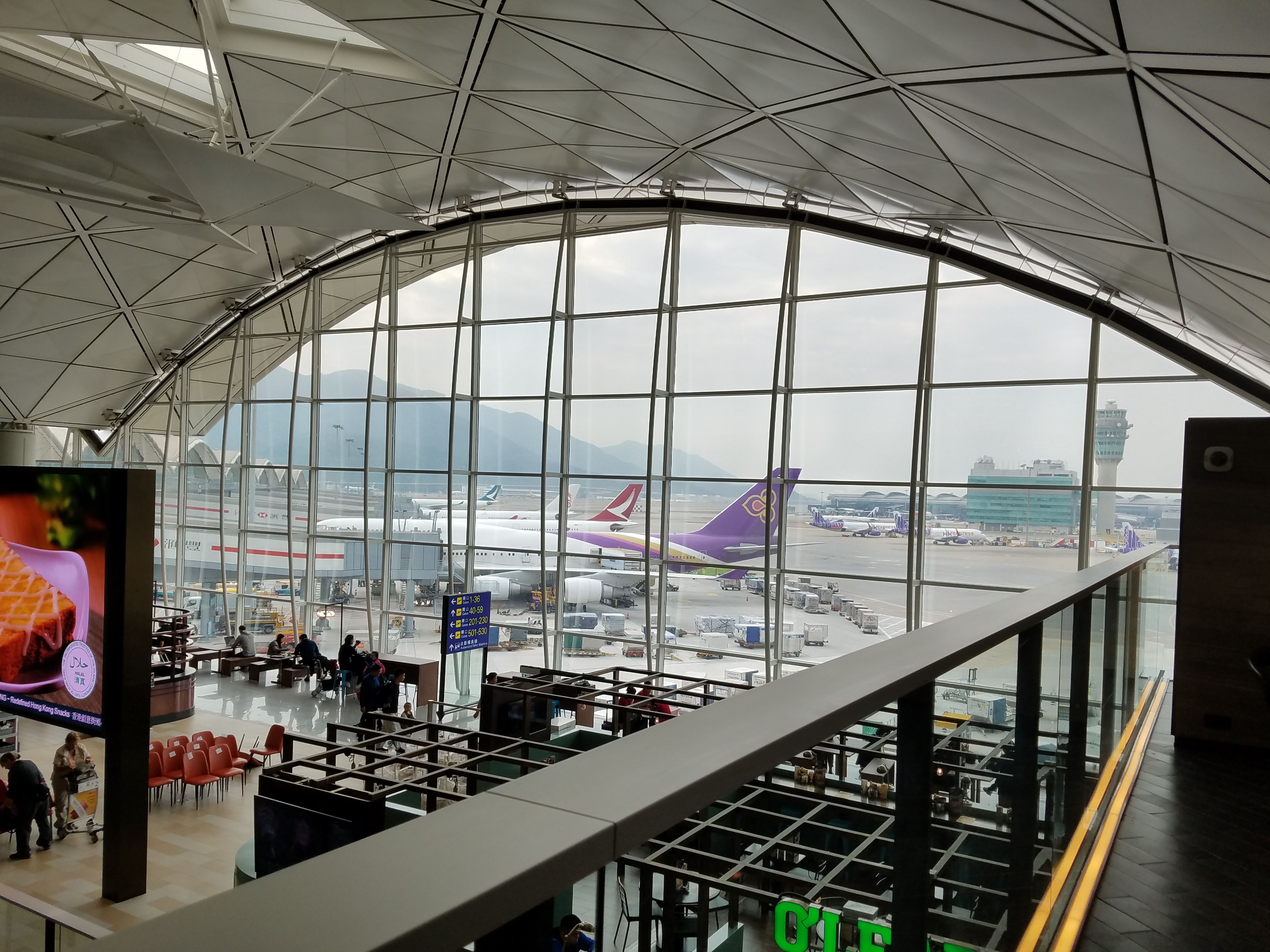The top 10 airline routes in the world by how much capacity is scheduled are all generally in the Asia Pacific region. That includes the Mideast (Saudi Arabia’s domestic Riyadh – Jeddah) and it includes Australia (Sydney – Melbourne).
There’s not a single route in the top 10 in the U.S., Canada, or anywhere in Europe. A decade ago South America featured once – Sao Paulo to Rio – but that’s no longer in the top 10.

Sydney Kingsford Smith Terminal 1 Departures
OAG crunched the data and found the top 10 routes by seats scheduled in 2019. Like a decade ago the airport appearing most often on this list is Tokyo Haneda. Many of the routes traded places over the past decade but most of the city pairs remained the same. Perhaps the most surprising addition is Ho Chi Minh City – Hanoi, which jumped 465 places in 10 years.
Here are the top 10 city pairs by airline seats scheduled between them in 2019:
| Seoul-Gimpo | Jeju | 17,424,046 | ||
| Tokyo Haneda | Sapporo | 12,498,468 | ||
| Tokyo Haneda | Fukuoka | 11,400,018 | ||
| Ho Chi Minh City | Hanoi | 10,245,598 | ||
| Melbourne | Sydney | 9,960,696 | ||
| Mumbai | Delhi | 8,231,789 | ||
| Beijing Capital | Shanghai Hongqiao | 8,123,735 | ||
| Jeddah | Riyadh | 8,017,359 | ||
| Hong Kong | Taipei | 7,965,150 | ||
| Tokyo Haneda | Okinawa | 7,704,098 | ||

Hong Kong Chek Lap Kok International Airport
Hong Kong – Taipei was fourth a decade ago with nearly the exact same number of scheduled seats. They’ve seen a reduction in capacity following recent protests there.
The prominence in Asia is certainly a function of limited travel alternatives (in Europe there are trains between the major cities) as well as economic growth. Japan has held its prominent place without significant growth, China’s growth has been focused on myriad cities rather than just a couple of routes so there’s no new Chinese entrants. India’s aviation sector has lagged. It’s interesting that Bangkok is nowhere on this list (and wasn’t on it a decade ago, either).


Limited alternative? Like in the US?
More likely due to the fact is Asia simply has more people per square km, claiming they don’t have trains and have to fly is just weird.
Thailand has one real city. Everywhere else that might be considered a city by some measures is just a big town. Therefore, no domestic traffic between Bangkok and these towns large enough to be anywhere near the list.
@Chris
I agree. Especially, Beijing – Shanghai. This route has more trains per day than planes.
@Chris there are trains but you can’t take them between Bangkok and Hong Kong, Bangkok and Singapore etc. Within Japan? Sure.
All of those are domestic routes except for Hong Kong – Tapai. I wonder what the top 10 international routes are for capacity and where they fall on the overall list.
@Andrew Some view that as a domestic route.
“The prominence in Asia is certainly a function of limited travel alternatives (in Europe there are trains between the major cities) as well as economic growth.”
Well Gary, your use of parentheses definitely makes it sound as if there were no Shinkansen in Japan nor high-speed railway in China, and as if DB were always reliable and SNCF never went on strike. Instead, you should have considered the high airport taxes as well as the anti-flying rhetorics in some European countries.
These all are Domestic routes.
@Gary: Bangkok to Singapore is certainly a do-able (and very fun!) train route. Bangkok to Hong Kong will be coming as China’s belt-and-roading their way in Laos to Vientiane and you can already travel from Bangkok to Nong Khai, across the river.
The distances are large, however, and the existing SE Asia train routes are not modern, high speed rails or rolling stock. Bangkok to Singapore is not a route for anyone whose primary interest is to travel between the two cities efficiently.
I am shocked that HKG-BKK isn’t on the list. With 9 airlines serving this route, it should be on the top ten list. One major reason that I can think of is that several of these carriers are LCCs and therefore not accounted for.
‘Should’ is not relevant. A route either qualifies, or it does not. What relevance is the fact that 9 carriers serve a route (many with a single daily flight), when comparing with routes on which multiple airlines operate flights every 15 or 30 minutes?